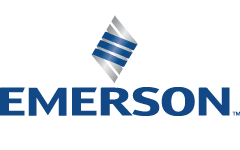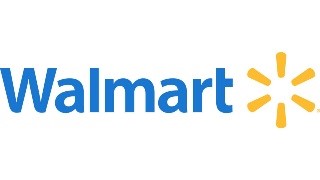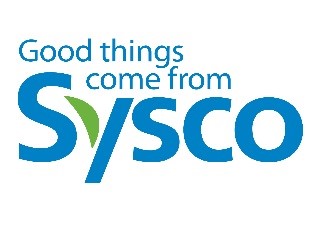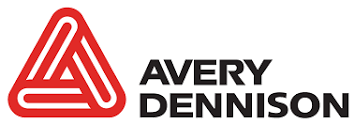Intangible Technologies
At the dawn of a new decade, the global economy is changing rapidly with the rise of the services sector. The world’s Gross Domestic Product (GDP) accounted for by services is experiencing a sharp increase in developed regions and especially emerging economies, such as Sri Lanka and Brazil. This growth in services has not only transformed the make-up of the world’s economic production but has altered trading patterns. In the U.S. economy, the services sector (a broad category of the economy that includes technology, media, financial services and transportation) is, by far, the largest contributor to GDP, accounting for nearly 70% in 2018. This contribution has rapidly accelerated in recent years as value added by service producing industries now accounts for 79% of total growth in GDP.
The fusion between mature manufacturing and service companies with intangible assets, such as digitization and software, are creating new and accelerated growth opportunities and value
to shareholders.
Even more transformative is the growing nexus of physical (tangible) products and digital (intangible) technologies, which is revolutionizing what manufactured products can do and contributes to a renewal of their value and place in the economy. Examples abound and include Smart TVs that are networked for streaming, exercise equipment that comes with videos or live streamed instructions, cars with navigation systems, printers with ink jet replacement subscriptions and so on. The takeaway is that investors have a much broader choice in incorporating technology into their portfolios and, as a result, it is a misappraisal to define technology representation as consisting exclusively of companies in the tech sector. Traditional companies with dynamic management have embraced this paradigm shift, reversing and extending the lives of their maturing products and creating new shareholder value. Companies that embrace the rise of services are creating jobs and wealth, and they are making products we rely on more efficient.
In a very short period, Disney has recast itself from a traditional media company with aging assets whose biggest profit centers were cable networks and capital-intensive theme parks into a fast-growing streaming and entertainment giant with loads of flexibility and recurring revenue. Disney launched its flagship Disney+ service just last November and already in the first few months has achieved its fifth-year goal for subscribers. The company plans to spend between $14 billion and $16 billion by 2021, developing new content and eventually releasing 100 shows and movies each year, many of them under the successful Marvel and Star Wars banner. At the same time, Disney plans to maintain its flexibility, preserving big budget titles for theatrical release, while its competitor Netflix remains a streaming-only company. Being aggressive in recognizing trends and matching this vision with demonstrated success at delivering content has enabled the company to recently up its subscriber target for 2024 from 90 million to a range of 230 to 260 million.At Delta, we favor companies that develop sustainable competitive advantages, promote organic growth through innovation and product extension, and have proactive managements that recognize and capitalize on important and changing trends. The shift to and incorporation of intangibles in business models of mature companies is both challenging to assess and yet tailor made for our approach and investment criterion. There is a universe of mature companies with long operating pedigrees that are transforming their business models by digitizing valuable services and content on a recurring basis to complement their physical products. This alteration has oftentimes even led to transitioning to a subscription revenue model and a concurrent increase of the earnings multiple. We will highlight just two examples within the Delta model portfolio – Emerson Electric Co. and The Walt Disney Company – to illustrate these opportunities.
Emerson Electric was founded in 1890 in St. Louis, manufacturing the first electric fans in North America. [Refer to page 3 for our review this quarter.] In recent years, management has focused on automation and software to provide its customers with data and predictive analytics connected to the machinery, electric and climate control equipment that Emerson manufactures. The company’s new tracking software has provided a valuable tool in preventative maintenance and reduced plant downtime and closures among customers. Emerson also has introduced a software platform to automate power restoration in the event of power outages, while optimizing performance of the customer’s energy grid. This innovation helps identify faults and improves energy conservation. The massive data these monitoring activities generate give Emerson additional tools to provide contract consulting services that provide recurring revenue at higher margins than one-off product sales.
As service-led companies comprise an increasing part of the economy, it is important to note that traditional boundaries classifying companies along defined sectors may no longer hold true. Fundamental research will play an increasingly important role in identifying and valuing assets you cannot see or easily touch. The fusion between mature manufacturing and service companies with intangible assets, such as digitization and software, are creating new and accelerated growth opportunities and value to shareholders. Our investment discipline identifies traits that are characteristic of intangibles, such as scalability, synergies and increasing customer retention. Although Delta’s model stock portfolio may not at first glance yield an impression of “new” economy stocks, a closer look reveals transformative companies that are rapidly incorporating software, data, analytics and consulting to maintain and attract new customers, which can lead to improved margins, market share and shareholder value.
December 15, 2020
Company Comments
Comments follow regarding common stocks of interest to clients with stock portfolios managed by Delta Asset Management. This commentary is not a recommendation to purchase or sell but a summary of Delta’s review during the quarter.
Emerson Electric Co. { EMR }
Emerson, formed in 1890 and headquartered in St. Louis, MO, is a diversified global manufacturing company that provides solutions to customers by bringing technology and engineering together in industrial, commercial and consumer markets around the world. The company operates in a wide variety of businesses including diagnostic controls and measurement products for industrial processes, data network power, manufacturing automation and climate technologies. The CEO, David Farr, has been at the helm for almost 20 years. He is only the third CEO in 45 years and has signaled his desire to retire in 2021.
Although Emerson generated over $18 billion in global sales in 2019, it has the flexibility of a smaller, nimbler player due to its regional operating structure. Emerson innovates, engineers, sources, manufactures and sells within each region of the world. What is made in Asia is sold in Asia; what is made in Europe is sold in Europe; and what is made in the U.S. is sold in the U.S. Sales in emerging markets have expanded to 35% of total company sales.
Emerson has shifted from a pure manufacturer to providing equipment monitoring services and software for maintenance and repairs as well as consultancy for efficiency and manufacturing.
Emerson’s competitive advantage stems from its industry-leading installed base of equipment – valued at over $120 billion – which allows it to benefit from decades of high margin parts and service sales. In addition, its manufacturing scale provides a cost advantage versus most competitors. In addition, Emerson has shifted from a pure manufacturer to providing equipment monitoring services and software for maintenance and repairs as well as consultancy for efficiency and manufacturing. Skilled services like these are generally provided under long-term agreements provided at higher margins than equipment sales.
The Automation Solutions segment (67% of total company profitability) offers leading technology and system solutions that allow the company to earn profit margins comfortably above peer levels. Customers from various industries, including oil and gas, power, chemical, and life sciences, pay a premium for Emerson’s complete front-to-back automation solutions. Emerson estimates the total addressable market for automation is over $200 billion.
Emerson spends more than $300 million a year on research and development resulting in new and value-added services. Emerson’s control engineering software – called Plantweb – was ranked No. 1 in its category. According to the Boston Consulting Group, 40% of Internet of Things (IoT) customers prefer to use traditional and well-established companies for IoT’s solutions. The IoT describes the network of connecting physical equipment through sensors and software to other devices to monitor and exchange data. Analytics gleaned from customers is valuable for Emerson as it leads to innovative technology and a tailored software solution for the customer. Emerson also benefits from high margin recurring software sales as companies typically update their system software every few years. The company is increasing its investments in engineering and development spending as well as sales, customer service and project management globally to enhance its relationship with customers, support product development and increase market penetration.
Emerson is still a cyclical company and does face risks within its portfolio of businesses. Any slowdown in the global economy or reduced capital spending in the oil and gas industry would have a negative impact on revenue and profits. Historically, Emerson has been an acquisitive company to gain technology and expand its market footprint. There is always the risk of overpaying or a failure to integrate new businesses leading to a less-than-adequate return on investment.
We believe the company’s extensive installed base and long-term customer relationships should provide support for its stated transition to a services and solutions strategy. We expect Emerson will grow revenues in the low, single digits on average with cash flow margins of 21% over our 10-year modeling period. Based on these assumptions, our stock valuation model indicates Emerson’s current stock price offers an average annual long-term rate of return of approximately 6.2%.
S&P Global Inc. { SPGI }
S&P Global is a leader in credit ratings, benchmarks and analytics, providing essential information and data content to the global capital, commercial and commodity markets.
Its brands include Dow Jones Indices, Standard & Poor’s, S&P Capital IQ and S&P
Global Platts. These businesses have a large global footprint, good market penetration, are highly scalable, require little capital investment and generate high profit margins and strong free cash flow.
In November 2020, S&P Global agreed to acquire IHS Markit for approximately $44 billion in an all-stock deal. IHS Markit is a $4 billion revenue business that provides critical data and analytics to major industries, financial markets and governments. IHS Markit is a collection of competitively advantaged businesses with highly recurring revenue streams. This expansion of S&P’s data and analytics business will further embed itself in customer workflows with high switching costs. Additionally, it will diversify away from its ratings business to more consistent, recurring revenue streams.
S&P Ratings, which currently makes up 50% of total company profitability, is one of the three dominant firms that rate securities and assess credit risk (the other two are Fitch Ratings, Inc. and Moody’s Investors Service). The three firms issue more than 95% of global bond ratings,
a market share virtually unchanged from the pre-2008 period. Barriers to entry are high due to market acceptance and reputation, scale, global distribution, network effects and complex regulations. Credit ratings are used by investors, issuers, investment banks and governments. Credit ratings provide the marketplace with a benchmark to help gauge borrowers’ credit worthiness. Most bond issues need at least one rating from a respected Credit Rating Agency (CRA) for the issuance to be successful. S&P and other credit rating firms benefit from a unique market structure that favors an oligopoly. Customers want only two or three ratings to minimize the time that management must spend with analysts, to diversify their risk in the event one analyst gets it wrong and to lower their financing costs.
S&P Ratings has been operating with tailwinds at its back due to historically low interest rates and bond issuance activity driven by the COVID-19 pandemic. The volume of rated bond issuance expanded significantly as companies refinanced at low rates and used debt to raise liquidity to manage through the pandemic. Though we expect bond issuance volumes to remain cyclical and to stabilize at more normative levels, we believe long-term growth should remain good with over $10 trillion of rated debt, much of which will need to be refinanced and rerated. S&P’s emerging market presence should continue to provide long-term growth as the company provides transparency and benchmarks to these developing capital markets. In addition, S&P has become a leader in the growing Environmental, Social and Governance (ESG) quantification and ratings space.
Barriers to entry are high due to market acceptance and reputation, scale, global distribution, network effects and complex regulations. Credit ratings are used by investors, issuers, investment banks and governments.
Separate from S&P Ratings, the company’s S&P Indices and S&P Global Market Intelligence segments are large and highly profitable global businesses with good growth prospects. S&P’s Indices provide investors with well-known market benchmarks, including the Dow Jones Industrial Average and S&P 500. The S&P 500 is the world’s most followed stock market index with over $10 trillion in benchmarked assets. Growing investor demand for index-based passive investments has boosted the share of exchange traded funds (ETF) and index mutual funds, increasing the fees paid to S&P Indices for the use of its benchmarks.
S&P Market Intelligence, which includes Capital IQ and SNL Financial, is a leading global provider of financial research, data and analytical tools for asset managers, investment banks, brokers and analysts. The global capital and commodity markets have become more integrated, driving increased demand for data and analytics. Market Intelligence continues to gain market share as it acquires, develops and integrates additional mission critical data and analytics content.
Though S&P Global’s businesses are cyclical, we believe its strong position in each of its businesses that provide mission critical information to capital, commercial and commodity markets has created a good long-term growth and margin profile. We assume mid-single digit revenue growth with operating margins averaging approximately 50% over the long term. Based on these assumptions, our valuation model indicates almost 7.0% annualized long-term rate of return given the current stock price.
Walmart, Inc. { WMT }
Founded in 1962, Walmart began with a single store in Rodgers, AR. Today, it has grown to more than 11,500 retail stores in 28 countries serving more than 265 million customers a week. The company is the world’s largest retailer and operates in a variety of formats, including discount stores, neighborhood markets, super centers and grocery stores as well as e-commerce websites in 27 countries. Walmart, with $524 billion in annual sales, possesses tremendous scale and leverage to extract the most favorable terms possible from suppliers and vendors. The company is exceptionally adept at using its cost advantage to maintain low price leadership and keep constant pressure on competitors.
With unrivaled purchasing power, scale, brand equity and a growing e-commerce platform, Walmart is currently the only American retailer that can compete on a comprehensive basis with Amazon’s retail offering. The company offers a wide variety of fulfillment options for transactions made through physical and digital channels with a large store footprint, deep vendor relationships and trusted brand. With its purchasing power providing cost leverage to keep prices low, Walmart is a formidable omnichannel retailer and remains the most valuable outlet for top manufacturers in terms of dollar sales.
Ninety percent of the U.S. population is located within 10 miles of a company store, and Walmart has roughly two-and-a-half times the store count of Target.
Walmart has redirected capital expenditures toward development of its global omnichannel capabilities. The company is now the No. 2 online retailer behind Amazon. Walmart is better positioned than other traditional retailers with its already efficient operations, bulk procurement and dense network of stores that serve as convenient distribution outlets. Ninety percent of the U.S. population is located within 10 miles of a company store and Walmart has roughly two-and-a-half times the store count of Target. The company’s “click and collect” offering (ordering online and pick-up at store) is sometimes more convenient than ship-to-home (particularly in groceries, where there can be spoilage concerns if a customer is unable to receive a package shortly after it arrives).
The pandemic has accelerated e-commerce trends, and Walmart’s digital investment has paid off as reflected in the most recent quarter. U.S. e-commerce sales were up 79% year over year as customers consolidated trips and vendors.
International will continue to be an opportunity for growth. The company’s strategy is centered on increasing penetration in its existing markets and entering new, emerging markets. Walmart executes this strategy by acquiring local retail chains and then improving operating efficiency to reduce pricing and drive sales volumes. The company is narrowing its focus internationally to ensure proper investment in businesses and strategies that are core to the company. Operating internationally can be more challenging than domestically as the company adjusts to different cultures, laws and varying degrees of economic development. However, we believe strategic international expansion remains a viable growth alternative for Walmart.
Overall, we expect Walmart will be able to grow sales in the low single digits driven by strong e-commerce growth and international expansion. We expect Walmart’s improved U.S. distribution and better inventory management to generate average cash flow margins of 6.0%. Based on these and other assumptions, our stock valuation model indicates Walmart’s current stock price offers a long-term average annual rate of return of more than 5.4%.
Sysco Corporation { SYY }
Founded in 1969, Houston-based Sysco is the largest food service marketing and distribution company in North America. Sysco’s major customers include independent restaurants as well as schools, colleges, hotels, hospitals and other food service outlets. Sysco holds about a 17% market share – two times its largest competitor – in the $250 billion food service market in the U.S. and Canada.
Sysco targets full service independent restaurant operators, and the company has nearly a 30% market share among this group. Sysco focuses on independent restaurants where it has a relatively higher degree of pricing power versus chain restaurants. Historically, Sysco has been able to pass along inflation adjustments without significant delays. Key drivers in the industry include prompt and accurate delivery of orders, competitive pricing, close contact with customers and the ability to provide a full array of products and services to assist clients in their food service operations. Sysco’s distribution network and scale are competitive advantages in an industry with high fixed costs, helping the company generate industry-leading returns on invested capital.
Sysco has the largest marketing and sales organization within the food distribution industry, which is a key differentiator. The company advises clients about how they can drive sales and minimize costs. Sysco specializes in assessing business operations and providing its customers with a range of ancillary services, such as menu planning advice, food safety training, inventory control, product usage and labor scheduling reports. These services establish a level of trust and dependence and give Sysco valuable information relating to extensions of customer credit and accounts receivable management.
Sysco’s distribution network and scale are competitive advantages in an industry with high fixed costs, helping the company generate industry-leading returns on invested capital.
COVID-19 has had a significantly negative impact on Sysco and its customers and suppliers. The company took action early in the pandemic and increased its liquidity and strengthened its balance sheet. Through short-term credit facilities and a new long-term debt offering, Sysco has $8 billion in balance sheet liquidity. Sysco quickly pivoted to new sources of revenue in the retail grocery channel as food-away-from-home collapsed due to lock-downs and social distancing orders. It helped 16,000 customers set up “pop-up shops” in dining areas, establish take-out business, create shortened, more focused menus and expand patio and outdoor dining. On the cost side, Sysco removed $500 million in annual costs, which reflects reduced staffing levels, including temporary furloughs and permanent workforce reductions.
The company’s revenue growth will be driven primarily by acquisitions. Sysco’s size and free cash flow will allow it to continue as a consolidator in a fragmented industry. Acquisitions will focus primarily on product extensions in the U.S. as well as geographic expansion that position Sysco to sell additional products to new and existing customers. In addition, we believe Sysco’s size, financial strength, scale and broad product offering provide advantages, particularly during such a time of uncertainty. Customers can depend on Sysco’s product reliability and timely delivery, which may allow Sysco to gain market share from struggling competitors. We believe Sysco will be in a position of strength once a more normative environment returns as both the food-away-from home and independent restaurants gain share in overall food consumption.
Growing largely through acquisitions, Sysco retains a decentralized, entrepreneurial culture that gives wide autonomy to the individual distribution centers. Sysco’s profitability has been trending upward since it discarded its major consolidation and operating systems software overhaul effort. However, the company has benefitted from its recent regionalization effort, which is a more appropriately scaled effort to further consolidate procurement, streamline its distribution, increase sales productivity, improve customer service and simplify the order fulfillment process. Management expects to save an additional $350 million annually in 2021 – as well as additional savings in 2022 – to reinvest in revenue growth and improved profitability.
Despite its industry dominance, Sysco faces some challenges beyond cyclical economic headwinds. The industry is highly fragmented and competitive. In addition to local and regional distributors, competition increasingly includes cash-and-carry wholesalers, such as Restaurant Depot, club stores and a growing prevalence of group purchasing organizations. As an industry consolidator, there is always the risk that Sysco will overpay for acquisitions and is unable to profitability integrate these new companies.
We estimate that Sysco will be able to grow revenues long term at a low, single-digit rate.
The company should be able to produce operating margins averaging in the mid-single digits, with those margins trending higher over time. Using these assumptions, our stock valuation model indicates Sysco’s current stock price offers a long-term average annual rate of return of over 5.0%.
Avery Dennison Corporation { AVY }
Avery Dennison is the leading manufacturer of pressure-sensitive labeling materials. The company is also one of the world’s largest producers of retail apparel ticketing and branding systems, radio frequency identification (RFID) inlays and tags as well as specialty tapes. Avery has a significant global presence with approximately 200 manufacturing and distribution facilities in 50 countries and product sales in 89 countries. Nearly 75% of revenue is derived from international markets, including emerging markets.
The firm’s extensive global distribution network and customer relationships further strengthen its advantages over its competition, particularly with large consumer products manufacturers, such as Procter & Gamble Company.
The company maintains a dominant market share position in its two main businesses: pressure-sensitive materials and retail branding and information solutions. Avery’s specialization, superior product offerings and effective customer service should continue to strengthen its relationships in these businesses. Although both business segments have reached maturity in developed markets with pockets of excess growth remaining in specialty labels, Avery continues to build on its already significant international presence, particularly in Asia. Long-term, these economies should continue to grow the demand for packaged goods, and apparel likewise will increase. In addition to adding new regional partnerships, Avery grows as its multi-national customers expand into new, faster growing regions.
Avery’s size affords it a manufacturing scale advantage. The firm’s extensive global distribution network and customer relationships further strengthen its advantages over its competition, particularly with large consumer products manufacturers, such as Procter & Gamble Company. These relationships can be “sticky” due to the tailored servicing involved. Meeting specific customer specifications and formats increases switching costs.
Pressure-sensitive materials is Avery’s most important business segment and contributes 70% of company profits. Avery is more than twice the size of its nearest competitor. The company’s manufacturing scale enables Avery to obtain operating efficiencies that generate a premium profit margin over its competitors. Further, its multi-year operating improvement plan continues to grow company profitability. The company’s technical and engineering expertise have led to innovative new products, such as clear film labels and thinner, more flexible labels that conform to oddly shaped consumer packages and bottles. These specialty labels are a faster growing segment of the market with premium operating margins. This technology is important to consumer products manufacturers for brand awareness and product appeal on the shelf.
We expect Avery will continue to benefit from the growing acceptance of RFID tags, which make up a relatively small but rapidly growing and increasingly important part of the overall company. RFID tags help companies manage their inventory and distribution. The business has grown to $500 million in annual revenue. Growth in web shopping and omnichannel retailing will continue to drive rapid growth for RFID inlays due to its inventory management advantages.
Given Avery’s concentration in mature markets and its increasing market share in faster-growing emerging markets, we have assumed the company can grow revenue approximately 4.0% annually over the next decade. At this pace, given the company’s operating efficiencies partially mitigated by competitive pressures, we believe cash flow margins can average approximately 13.5% during this period. With the recent appreciation in the stock price, we have trimmed our position. Based on these assumptions, our stock valuation model indicates Avery’s current price offers a long-term average annual rate of return of approximately 4.0%.
For a pdf of this letter please click here.
Dated: December 15, 2020
Specific securities were included for illustrative purposes based upon a summary of our review during the most recent quarter. Individual portfolios will vary in their holdings over time in relation to others. Information on other individual holdings is available upon request. The information contained herein has been obtained from sources believed to be reliable but cannot be guaranteed for accuracy. The opinions expressed are subject to change from time to time and do not constitute a recommendation to purchase or sell any security nor to engage in any particular investment strategy. Any projections are hypothetical in nature, do not reflect actual investment results and are not a guarantee of future results and are based upon certain assumptions subject to change as well as market conditions. Actual results may also vary to a material degree due to external factors beyond the scope and control of the projections and assumptions.






